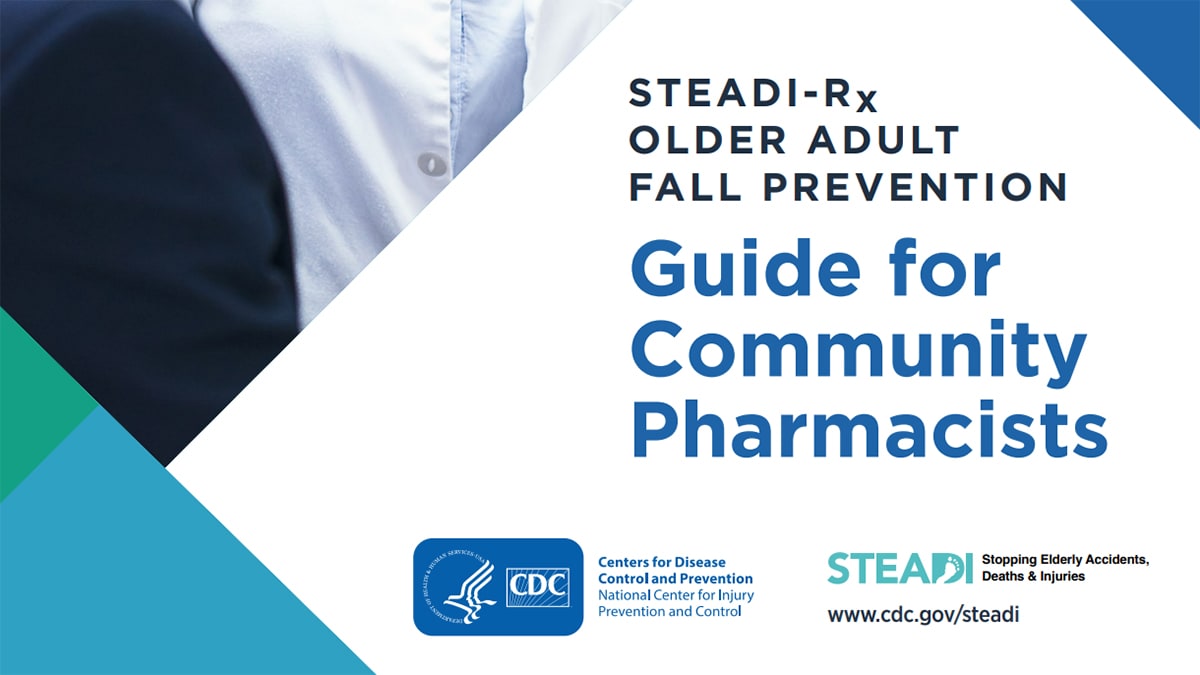Pharmacy Care (STEADI-Rx)

STEADI-Rx was designed to improve collaboration between healthcare providers and pharmacists and is based on CDC’s STEADI (Stopping Elderly Accidents, Deaths, & Injuries) initiative. STEADI-Rx provides guidance to pharmacists on how to screen pharmacy patients, assess their medications, and intervene to reduce fall risk. CDC developed STEADI-Rx in partnership with the University of North Carolina Eshelman School of Pharmacy and School of Medicine.
Certain medications can increase fall risk
Many older adults (aged 65 and older) take medications for sleep disorders, anxiety, high blood pressure, or chronic pain. Side effects from these drugs can change the way a person feels or thinks and can cause drowsiness, loss of balance, changes in vision, slower reaction time, and other effects that increase the risk of falling. Falls are serious—and in 2018 resulted in about 3 million emergency department visits, 950,000 hospitalizations, and 32,000 deaths among older adults.1 The U.S. older adult population is rapidly growing, which means more people will be in need of interventions to reduce fall risk. As medication experts, pharmacists can help reduce fall risk using STEADI-Rx.
How STEADI-Rx works:
- Screen patient for fall risk at the pharmacy.
- Perform a medication review.
- Share information with the patient and provider.
- Provider responds to shared information.
Helping Pharmacists reduce older adult falls
STEADI-Rx has resources to help pharmacists engage patients and providers to improve fall-related health issues. STEADI-Rx offers tools for pharmacists on how to screen, assess, and coordinate care to reduce older adult fall risk.
- STEADI-Rx: Guide for Community Pharmacists [PDF – 3 MB] CDC partnered with UNC to develop a new resource to help pharmacists implement evidence-based, fall prevention strategies for their older patients.
- Community Pharmacy Algorithm [PDF – 165 KB] (or flowchart) outlining how pharmacists can conduct fall risk screening, assessment, and care coordination.
To help pharmacists share information with patients’ healthcare providers.
- Centers for Disease Control and Prevention, National Center for Injury Prevention and Control. Web-based Injury Statistics Query and Reporting System (WISQARS) Fatal Injury Data. (2018)